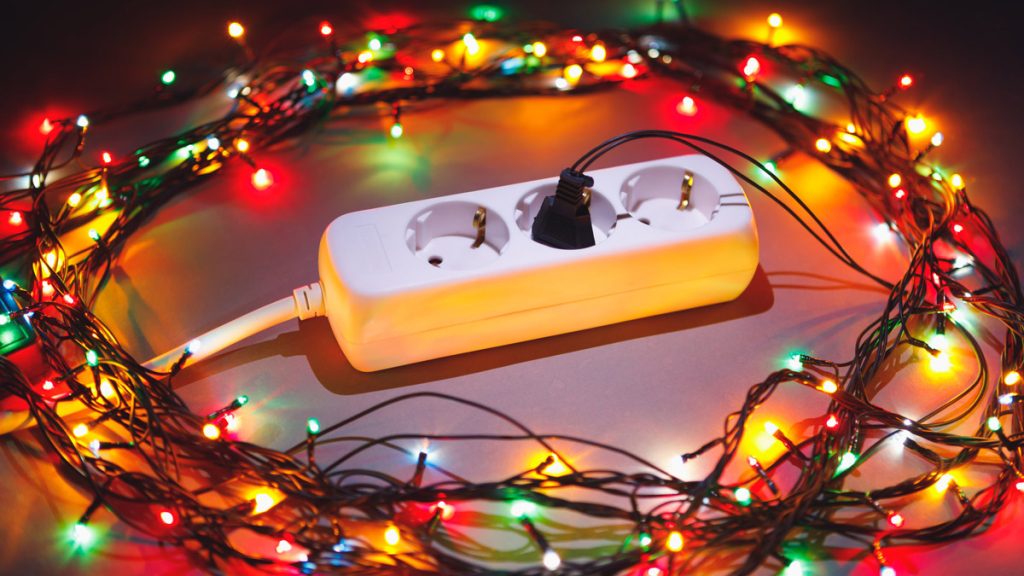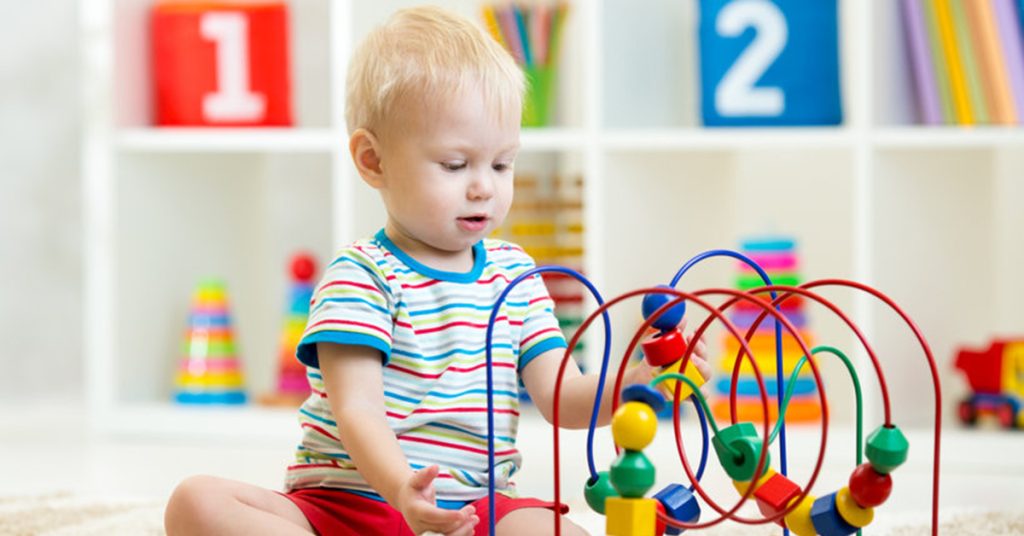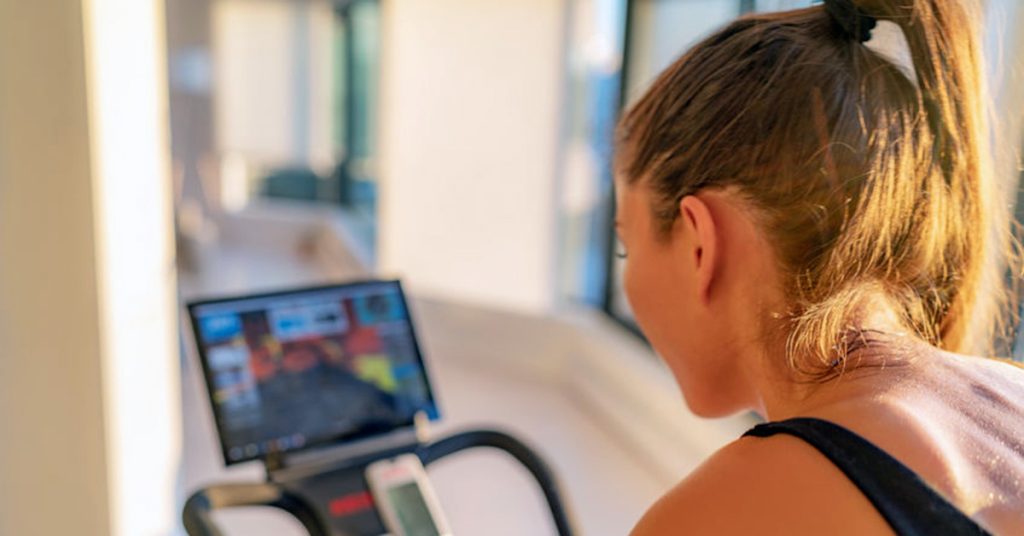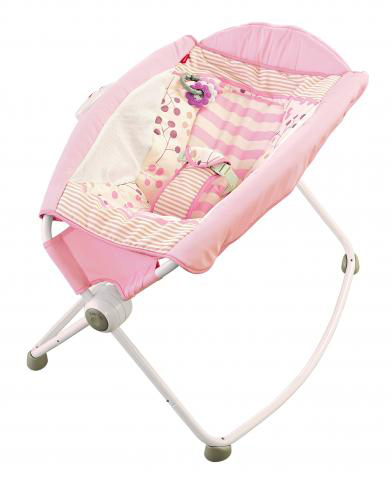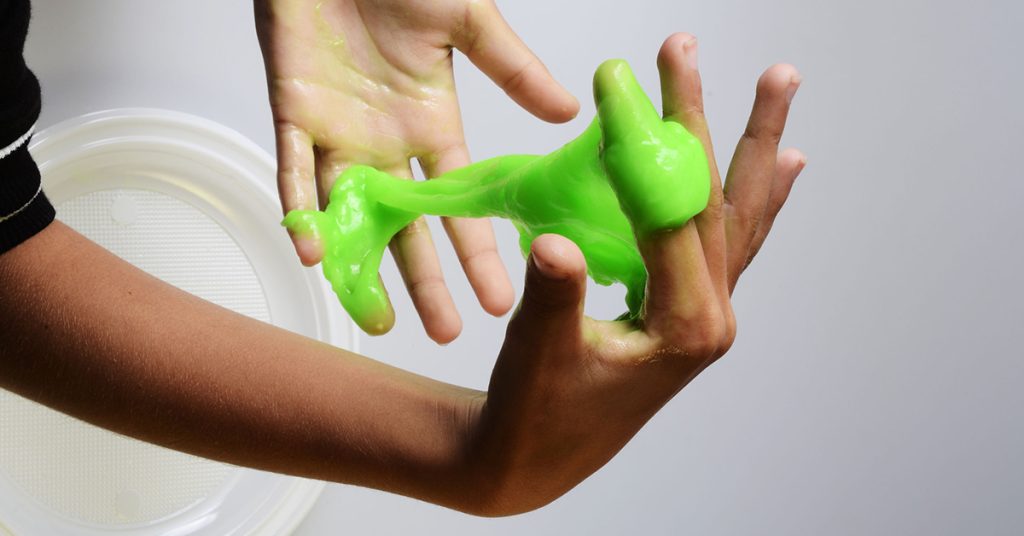Posts Tagged ‘“product liability”’
Deck the Halls, But Decorate Safely
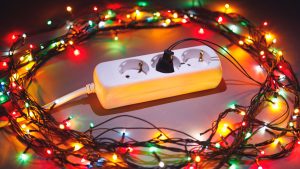
Immediately replace holiday decorations and power appliances that are in poor condition. Another year of use could result in injury.
Though a time for joy, the holidays can also set the stage for potential injuries, as we rush, stress, decorate and wrap. Surprisingly, you may discover some of the most dangerous hazards right in your own home, among the holiday decorations and boxes you pull of storage to deck the halls.
While colorful and festive, holiday decorations contribute to many injuries each year. During 2019, nearly 15,000 people were injured in holiday decorating incidents and treated in emergency rooms, according to the Consumer Product Safety Commission (CPSC). Nearly half of these injuries involved falls. Many others are injured each year after the decorations are hung, by defective or poorly-made products or decorations that are set up unsafely.
Unlike some situations, you have control of your home and can take steps to protect yourself, your family and holiday guests.
Start by simply walking around your home and checking your holiday decorations and your Christmas tree, if you have one. Make sure all your decorations are out of reach of young children and put away all tools, such as ladders and hammers, or boxes you may have left out while decorating.
Watch for unsafe products, such as those which arrive in questionable packaging or contain broken or small parts. Manufacturers have a responsibility to design products and provide reasonable warnings for safe use. There can be a high cost when manufacturers or others in the supply chain neglect their responsibilities in the rush to sell, or when individual sellers on Craigslist or Facebook Marketplace offer used goods without the original packaging. But it can happen and ruin a family’s holiday – unless you recognize the risk and act to prevent injury.
Use Caution While Hanging Holiday Decorations
Still have some decorating to do? Remember not to rush. During a season of merry and bright, you want to be safe and avoid injury. Holiday decorating can cause a range of injuries, from passing muscle strain to broken bones, though injuries can be much more serious, resulting in head injuries and even permanent disability. At a minimum, many people experience some muscle strain the next day after reaching and climbing. Planning can help!
So make a decorating plan. Team up with a family member or a friend so you have help carrying heavy boxes or using ladders or step stools.
Consider whether you are physically up for holiday decorating. As you get older, you may not be able to take on the same physical challenges. Acknowledge this before you start.
While you may be thinking, “Bah humbug,” you can still decorate. Just make a few adjustments for safety or to account for your late start. You can hang fewer holiday lights and hang them lower so you can stay off ladders, which are associated with many fall injuries during the holiday season.
Decorators of all ages should consider the cold weather. Even without snow or ice, you face a greater risk for muscle strain and injury during cold weather. It is never safe to climb a ladder in snow, ice, rain, winds or at night.
Water Your Christmas Tree Regularly
If you celebrate Christmas, your tree is the center of your holiday season, where you gather for family photos. But you should only purchase a live tree if you are home and have time to care for it.
Just as they bring joy, Christmas trees can cause devastation if they dry out and catch on fire. Each year, fire departments respond to an average of 160 Christmas tree fires across the U.S., resulting in injuries, deaths and millions of dollars in direct property damage, according to the National Fire Protection Association. These experiences can change a family and the holidays forever.
If you have already brought your tree inside, you may have cut 2 inches off the bottom before placing it in the tree stand. Now, your concern is watering the tree.
Regularly water your Christmas tree and keep it away from fireplaces and heating devices, which can accelerate drying out. The National Christmas Tree Association recommends that families check their tree daily and make sure the water level does not fall below the base of the tree.
Your Christmas tree stand is one of your most important holiday decorations in terms of safety. Choose one which can hold enough water to support your tree’s needs throughout the year. As a general rule, the association recommends stands provide one quart of water per inch of stem diameter.
If you are not up for a live tree, go artificial. Make sure your artificial Christmas tree is marked “flame-resistant.”
Watch for Defective Products and Check Holiday Extension Cords for Safety
Closely examine holiday decorations and equipment before you start decorating. Your trusted tools and supplies may have been recalled for safety since your last use or may not work well with newer products you have purchased.
Check ornament boxes for cracks; make sure ladders and foot stools are in good working condition, if you have to use them. Extension cords should be free from damage and cracks.
This is easy to forget. Many of us reach for extension cords after we start setting up decorations, not first. But here are a few points for safety on extension cords:
- Extension cords should be tested by a nationally recognized testing laboratory, such as Underwriters Laboratories (UL), Intertek (ETL) or CSA Group Testing and Certification. Similarly, holiday lights should also be tested.
- You should only use one extension cord at the most, so measure and buy one that meets your needs.
- Make it a habit to check for safety recalls before you plug your holiday extension cords in. Just visit www.cpsc.gov and search for extension cord recalls
- Replace your extension cords every few years. You trust these cords to light up your holiday and protect your family and home over the years, yet you expose them to more wear and tear than other products when you string them around your tree, furniture and take them in and out of storage each year.
Keep a Safe Home for Holiday Guests and Children
Consider what may be in a child’s reach or limit an older guest’s mobility. Move ornaments and decorations with small pieces and sharp edges out of reach. Remember children are curious and may pull at decorations or small broken lights found under a tree or plastic packaging you may have dropped while wrapping gifts. A child could find these, put them in their mouth and choke or suffocate – the worst thought for the holiday season.
Look beyond your holiday decorations as well. You may not be able to see all the hazards, so think about how your home products are powered. For example, flashlights and electric holiday lights may contain small button batteries, which a young child could find and swallow. So may your remote controls, including those you use to manage your holiday lights, and these can be too easy for children to open. You may treasure the holiday cards you receive, but these can also tempt children. Tuck away cards with removable pieces.
It is critical to think about fire prevention, especially before you invite guests into your home. Take a moment to test your smoke alarms. As we mentioned above, keep holiday decorations away from working fireplaces and stoves. Turn these appliances off when you have guests over and skip candle use for holiday ambiance or at the holiday meal.
Finally, we often hang or position decorations near entrances or hallways where people can enjoy them. This can bring joy, but block access to essential exits if a fire ever broke out. It is best to enjoy these somewhere else and keep all entrances and hallways clear.
Free Legal Consultation – Boston Personal Injury Lawyers
Breakstone, White & Gluck specializes in personal injury law, representing those who have been injured or killed by negligence across Massachusetts, including in Boston, Cambridge, Somerville and Arlington.
With more than 100 years combined experience, our lawyers have been recognized among the top personal injury attorneys in Massachusetts and New England. We represent clients in all areas of personal injury law, including injuries and wrongful death resulting from defective products.
If you have been injured by someone else’s negligence, learn your legal rights. For a free legal consultation, contact Breakstone, White & Gluck at 800-379-1244 or use our contact form.
Don’t Rush; Reminders to Help Massachusetts Families Buy Safe Holiday Toys in 2021
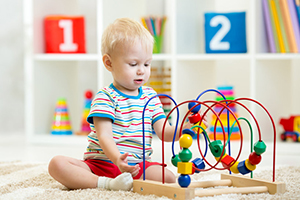
Don’t rush your holiday toy shopping. Take time to read and follow age-appropriate labels before you buy toys.
Many of us are feeling quite stressed about holiday shopping as we watch the news. Still, when you shop for a child, safety is essential. Slow down and look for a fun, safe and age-appropriate toy that will bring joy, not injury, into your home.
Read Age-Appropriate Warning Labels, Toy Packaging and Online Descriptions
You may think you are buying a safe because the toy was featured on a morning news program or has received top reviews online. But despite your best intentions, you may not actually be purchasing the same toy. To avoid buying a so-called counterfeit toy, look for reputable sellers, such as department stores. Try to purchase from brick-and-mortar stores.
Before purchasing or at home, closely examine the packaging on the toy and make sure it matches the manufacturer’s online description. If you purchased the toy online, the toy packaging should also match the description on Amazon or the online marketplace. Once the toy arrives, open and inspect the box contents.
Everything should be consistent, including the age-recommendation labels.
Check for Toy Recalls
The packaging is a tool to help you shop, as is the CPSC website, which you can check for toy safety recalls. In addition to recalling toys, the CPSC has also recalled many inclined infant sleepers over the past two years. Last summer, the commission approved a new federal safety standard for infant sleep products which will take effect in mid-2022. Here is one of our recent blogs on infant sleep products.
U.S. Toy-Related Injuries and Deaths by Age 2018-2020
No one wants to think about the possibility of a child suffering an injury while playing with their own toys. Yet this is a risk in when so many toys are sold online through Amazon, Ebay and other online marketplaces. Independent sellers can sell on these sites or quickly build their own websites, optimize them in the search engines, then close sites down.
Between 2018 and 2020, 50 children were killed in toy-related accidents across the U.S., according to CPSC data released in May 2021. Many children suffered suffocation and other injuries in accidents involving toys with small parts, balls, stuffed animals or accessories. Two children drowned on water toys. Seven children died in accidents involving non-motorized scooters and two were killed on nonmotorized riding toys.
In 2020, nine children were killed and nearly 150,000 children age 14 and younger were treated for toy-related injuries in hospital ERs. Here is a breakdown of toy-related injuries by age during 2020:
- Children under 5 suffered 40 percent of all toy-related injuries.
- Children age 12 and younger suffered 73 percent of toy-related injuries.
- Children age 14 and younger suffered 75 percent of toy-related injuries.
Common Toy Shopping Mistakes
As we have discussed, you can reduce the risk of injury in your household by reading age recommendations and carefully inspecting toys and packaging. But you can also challenge yourself if you have these thoughts:
Buying Holiday Toys Because Just They Are Available or Priced Right
Earlier this month, the Toy Association shared positive news: 76 percent of parents surveyed said they read age recommendations before buying toys.
However, many can be swayed. About 65 percent of parents said they may buy a counterfeit/knock-off toy if their first choice was unavailable. Meanwhile, 63 percent said they could be influenced by a lower price.
Buying Outside Age-Recommendations for Toys
“This toy is marked age 8 and older, but my 5 ½ year old is up for challenging toys .” Sound familiar? The Toy Association reports 68 percent of parents share this thought and would buy a toy outside age recommendations.
Consider age-recommendation labels an important tool, designed to protect your child from choking, an eye or head injury or a broken bone. Age recommendations are not arbitrary; they are based on a toy’s performance under federal toy safety requirements.
For example, toys with small parts or balls have to undergo the “small parts cylinder” test. The cylinder has a diameter of 1.25 inches, with a slanted bottom opening 1 to 2.25 inches. If a toy or small part passes through the cylinder, it has to carry an age-warning label that states, “Choking Hazard – Small Parts. Not for Children Under 3 Yrs.” Read more about the small parts regulations for toys.
Read more in our Project KidSafe toy safety series.
Free Legal Consultation – Boston Product Liability Attorneys
Founded in 1992, Breakstone, White & Gluck has recovered millions of dollars in compensation for victims of negligence and wrongdoing in Massachusetts. Consistently recognized by Super Lawyers and Best Lawyers, our personal injury lawyers specialize in product liability, holding companies responsible for injuries and wrongful death caused by defective products, toys and vehicles.
Breakstone, White & Gluck is located in 2 Center Plaza in Boston, across the street from the Government Center T stop and Boston City Hall. If you have been injured, Breakstone, White & Gluck offers a free legal consultation. Learn your legal rights by calling and speaking with one of our attorneys today at 800-379-1244 or 617-723-7676 or use our contact form.
Child’s Death on Peloton Treadmill Prompts New Safety Warnings
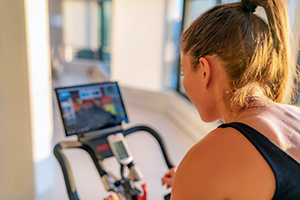
While convenient for parents, at-home treadmills, stationary bikes and fitness equipment can cause children serious injuries.
If you have jumped on the Peloton bandwagon, you are not alone. But many parents are exercising with more caution this week after learning about a child’s tragic death on a Peloton treadmill. Consumers are being urged to keep children away from the fitness equipment, as the Consumer Product Safety Commission (CPSC) investigates.
Peloton Interactive, Inc. became a household name during the 2019 holiday season, with a tongue-in-cheek ad campaign that poked fun at a husband and his “Peloton wife.” Then the pandemic began and Peloton became the fast rising star of the fitness industry. Many rushed to set up a high-end stationary bike or treadmill right at home, then logged into the fun digital app.
Peloton’s CEO announced the child’s death on a Tread+ last week in a letter, revealing the company was also aware of a small handful of other Tread+ accidents involving children. While he cited no injuries in these cases, NBC later reported that another child, a 3-year-old boy, had suffered serious injuries after being found trapped under a Peloton Tread+.
According to SaferProducts.gov, the child’s father had found the boy trapped under a Peloton Tread+ in early February. Initially, he was not breathing and had no pulse. The boy suffered a significant brain injury, along with a neck injury and petechiae on his face, which can occur when one’s blood flow is blocked. Peloton learned about the incident from the CPSC and said the company’s heart went out to the family.
If you or your child has been injured by an unsafe product, you should receive immediate medical care and report your injury promptly to help warn others. You do not have to make a report on your own. Report the incident with guidance from an experienced product liability lawyer at Breakstone, White & Gluck, who can advise you of your legal rights.
Treadmill Injuries
This is a timely investigation and conversation. Many families have purchased fitness equipment to use from the convenience of their homes as they juggle family and work responsibilities under COVID-19 restrictions. As a result, treadmill sales rose over 120 percent between March and October 2020, according to the Washington Post. Stationary bike sales nearly tripled.
Treadmills, though a convenient way to exercise from your home and office, are associated with many fitness equipment injuries. Across the country, emergency rooms treated an estimated 22,500 treadmill-related injuries during 2019, according to the CPSC. Children under 8 suffered about 2,000 injuries. There were 17 fatal injuries on treadmills between 2018 and 2020, including a 5-year-old girl.
Using Treadmills Safely in Your Home
According to Consumer Reports, children ages 1 to 6 suffer the most treadmill injuries of any age. Older siblings can also be injured when they just want to try the equipment and interactive features that look like video games.
Consider that young children are often just learning how to ride their first bike and developing their coordination skills. They are not strong enough to use a heavy, mechanical piece of equipment, not even for just a moment under an adult’s supervision.
Treadmill companies have a duty to warn consumers about the potential harm to children and how to prevent injuries to children. Manufacturers also have to watch how they showcase fitness equipment in ads and commercials. If a consumer sees a bike set up in a living room or family space, this may leave the impression that this is safe near children and families.
You can take steps to protect your children by securing fitness equipment in a separate room, away from your children and pets. Just as important, remove the safety key when you are done using the treadmill and fold it up if possible.
Mechanical Defects and Other Issues with Treadmills
When you buy fitness equipment, you may wonder whether you will enjoy using it or if it will be worth the investment. No one expects to be injured or see their child injured.
Yet there are many defective and unsafe products sold each year. This includes defective equipment which should have never been sold due to defective design or manufacturing error. Injuries can also happen when a manufacturer fails to warn the consumer about unsafe use. Manufacturers have a duty to promptly report when their products cause injury or wrongful death.
Many treadmill injuries can be traced back to poor manufacturing. Consumers have no warning about mechanical problems, such as spinning belts and erratic motors, until they use the machines. As a result, a consumer can lose their stop or fall, first hitting a moving treadmill and suffering head injuries or skin lacerations.
Improper set up can also contribute to injuries. Treadmills should come with instructions on where to safely place the equipment in your home or office. When a user misses a step, they are much more likely to get caught in the tread mat or hit a wall if they do not have adequate space. Read the instructions carefully as treadmills can come in different weights and sizes at times. As a guide, consider the ASTM International treadmill recommendations are to leave at least 6 1/2 feet of free space behind the treadmill. There should be about 1 ½ feet on each side. But your model may have different specifications.
Incomplete or incorrect labeling is another source for fitness equipment injuries. Without proper warning, the consumer cannot make the best decision about whether the product is safe for purchase and use in their home environment.
In addition to larger fitness equipment, be aware of small accessory equipment. Weights, air-filled exercise balls and yoga straps all look simple to use. But these fitness products can be poorly made with cheap materials, making them unsafe for both children and adults.
In one recent case, one of our attorneys led an investigation and negotiations which resulted in a $1.15 million product liability settlement for our client.
Free Legal Consultation – Boston Defective Product Attorneys
Breakstone, White & Gluck of Boston is committed to providing our clients with aggressive and thorough representation. If you or someone in your family has been injured by an unsafe product, contact our product liability lawyers. We serve clients across Massachusetts, including in Boston, Cambridge, Waltham, Framingham, the North and South Shores, Cape Cod, Fall River and Worcester. For a free consultation, call 800-379-1244 or 617-723-7676 or use our contact form.
Infant Sleeper Recalls Continue Nearly a Year After Fisher-Price
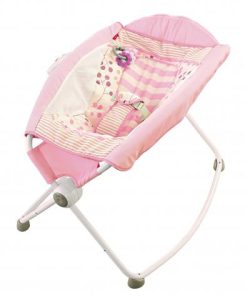
Nearly a year after the Fisher-Price Rock ‘n Play recall, the work continues to remove unsafe sleepers from the market.
After more than 70 infant deaths involving inclined sleepers, the Consumer Product Safety Commission (CPSC) and lawmakers continue working to prevent injuries.
The CPSC recently announced the recalls of over 165,000 infant sleepers from four companies: Summer Infant, Evenflo, Delta Enterprise Corp. and Graco. Thankfully, these recalls are not related to any deaths or injuries. They are part of the CPSC’s ongoing work to protect children after Fisher-Price’s startling revelations about its Rock ‘n Play, which has been linked to dozens of infant deaths. However, these models have not been linked to injuries, according to the CPSC and at least one company initially refused the CPSC’s efforts.
Graco is recalling the largest number of units, 111,000 Graco Little Lounger Rocking Seats. Sumr Brands is recalling 43,000 SwaddleMe By Your Bed Sleepers. Delta Inclined Sleepers is recalling about 5,900 units and Evenflo has about 3,100 units involved in the recall.
If you own one of these sleepers, you can read the recall notices on the CPSC website. You should be able to contact the manufacturer and return your sleeper for a cash refund or a voucher.
Consumers are urged to stop using the inclined infant sleepers. It is better to return the infant sleepers, rather than discard them in the trash.
Fisher-Price Rock ‘n Play
Parents received the first frightening warning about inclined infant sleepers last April, when Fisher-Price issued an advisory for parents, initially announcing 10 babies had died in the sleeper after turning from their back to their stomach, then suffocating. The company warned parents not to let children use the sleeper after 3 months old.
Within days, facing outrage from parents and new allegations, Fisher-Price acknowledged more deaths and had to replace its advisory with a recall notice for 4.7 million Rock n’ Play sleepers. Because this product was sold for 10 years, this has been a massive recall. Adding to the challenge is so many companies have followed Fisher-Price’s lead and developed similar inclined sleep products.
After Fisher-Price, we learned that Kids II was also facing allegations that several infants had died in its sleepers. The company recalled 700,000 products in late April, just a few weeks after Fisher-Price took action.
Federal Legislation to Ban Inclined Sleepers
The CPSC has been working with other companies to identify unsafe sleepers while advising consumers not to use inclined sleep products. The Fisher-Price sleeper and other models are dangerous because they sit at a 30 degree incline. Babies can roll over and suffocate. The American Academy of Pediatrics (AAP) advises parents to put infants on flat surfaces to sleep and remove blankets, toys and other items. Researchers from the University of Arkansas have also recommended flat surfaces for sleeping and have said any incline should fall under 10 degrees.
Federal legislation has been proposed to ban inclined these sleepers altogether. According to Consumer Reports, the Safe Sleep for Babies Act has already passed in the House of Representatives. If this happens, the CPSC will not have to pursue product recalls one by one and negotiate with each manufacturer.
Boston Product Liability Lawyers – Boston Personal Injury Lawyers
Free Legal Consultation
Breakstone, White & Gluck has over 100 years combined experience representing those injured by the negligence of others in Massachusetts. Our attorneys have extensive experience in the area of product liability and defective products. For a free legal consultation, contact our firm at 800-379-1244 or 617-723-7676 or use our contact form.
Worst Toys of 2019 List Showcases Holiday Hazards
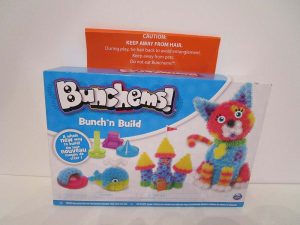
Photos: Worst Toys of 2019, W.A.T.C.H.
The Worst Toys of 2019 list has been released, providing parents and grandparents a preview of toys to avoid this holiday season. We urge you to read this list before you shop. Each toy mentioned has caused injury or has grave potential. We want Massachusetts families to steer clear and enjoy a safe and happy holiday season.
As you read, remember there are just 10 spaces on the Worst Toys list, which is compiled by W.A.T.C.H. – or World Against Toys Causing Harm, Inc. Yet there are far more toys out there which may be unsafe or inappropriate for your child’s age. Read our blog on the Worst Toys list, to help you identify common features in unsafe toys, such as small parts which could cause choking injuries.
Toy injuries are a daily risk for many families in Massachusetts, not just during the holidays. Across the country, 251,700 people suffered toy-related injuries in 2017. From 2015 to 2017, 37 children died while playing. These devastating numbers are preventable if manufacturers, distributors and retailers safely handle products throughout the supply chain. Parents can do their part by always reading and following age recommendation labels. Remember you also have help on this front. You can check the Consumer Product Safety Commission’s website for product warnings and recalls before you shop this holiday season, and throughout the year. You can also sign up for e-mail alerts.
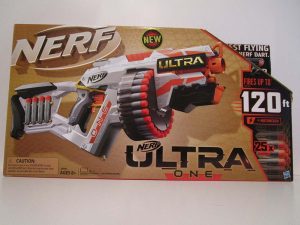 1- Nerf Ultra One
1- Nerf Ultra One
Though it looks like a blast, this Nerf toy is a $49.99 danger, W.A.T.C.H. says. The dart blaster shoots up to 120 feet and claims to be the “Farthest Flying Nerf Dart. Ever.” It carries an age recommendation of 8 and up, with several troubling warnings. W.A.T.C.H. reports the darts can be shot with enough force to cause eye injuries.
2 – Spike the Fine Motor Hedgehog
Spike is a risky toy because he comes with 12 removable quills, all 3 ½ inches long, W.A.TC.H. The problem is the packaging carries an age recommendation of 18+ months. This is deceptive, leading parents into conclude this is a safe toy for young children of that age. The age recommendation should be higher and carry a choking hazard label.
3 – Bumchems Bunch’N Build
These building toys stick together and make cute formations. What’s not cute is how they can get caught in your child’s hair. The manufacturer is clearly aware of this potential, advising parents to keep their child’s hair pulled back to avoid entanglement. Although they continue selling it, you don’t have to buy it. Carefully consider how your child and what could happen if you leave the room for a moment.
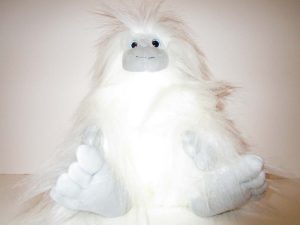 4 – YETI
4 – YETI
Pull at this doll’s white fur and with little effort, it becomes loose. Then it gathers, creating a choking hazard. The $21 toy is being sold everywhere this year, including Walmart.com, Target.com and Amazon.com. W.A.T.C.H. critically notes the toy has a recommendation of 24 months and up – on a removable sticker. Once this sticker comes off, consumers have to guess at the appropriate age.
Age recommendations are the most fundamental tool parents have in choosing safe toys. A removable label makes it hard to make safe choices, especially if you are handing the toy down between children.
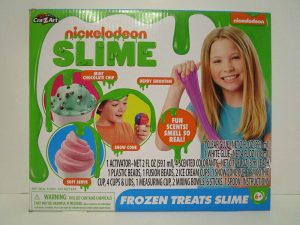
5- Nickelodeon Frozen Treats Slime
What can we say about this $9.99 slime toy? Or is it food? The truth is, it is a chemical which if ingested, can seriously harm your child. The confusing part is this slime really looks like a frozen treat on the box.
We urge you not to buy slime mixtures or any type of pretend food. There are plenty of other gift options. Traditional crafts such as drawing sets or even Play Doh are better choices. They don’t require any mixing of ingredients.
6 – Anstoy Electronic Toy Gun
W.A.T.C.H. is always critical of marketing realistic toy guns to children and has highlighted the practice over many years. This year it says the Anstoy electronic gun is being unsafely marketed for children age 14+ and can be found online by anyone with an Amazon account. We agree: steer clear of guns and choose toys which involve sports. A soccer ball, basketball or a new snowsled sound like great gifts to us!
7 – Diecast School Bus
This miniature school bus is a choking hazard because the small rubber tires can become loose. They are mounted on plastic wheels and can be pulled apart. So many toys have similar hazards and should be kept out of homes with younger children.
8 – Pogo Trick Board
This toy is a “high bounce ball” with dual handles for “tricking out.” The age recommendation is children 6 and up. The manufacturer warns children to wear a helmet to protect against head injuries. But the packaging shows two children using the board without a helmet. There is one child bouncing high while wearing a helmet, but overall, there’s not a strong advisory to parents.
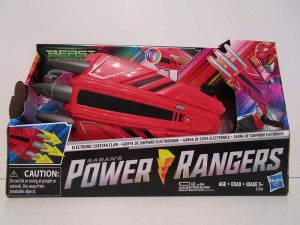 9 – Power Rangers Electronic Cheetah Claw
9 – Power Rangers Electronic Cheetah Claw
“Do not hit or swing at people or animals.” “Use away from breakable objects.” Finally, this toy carries a small parts warning, even though the age recommendation is 5+.
With so many warnings, why would you want to buy this toy? It may look cool to your child, but you have to remember it’s winter in Massachusetts. This is not a toy you want your child swinging around your home. Hasbro, the manufacturer, says the toy can cause potential eye or facial injuries.
10 – Viga Pull Along Caterpillar
This is an adorable toy, but it made the W.A.T.C.H. list because of its long string. This could cause a potential choking or strangulation hazard. The Viga Pull Along Caterpillar is a pull toy and should have a warning to go with its 24-inch cord.
Read more from the Worst Toys of 2019 on the W.A.T.C.H. website.
About Breakstone, White & Gluck – Free Consultation
Boston Product Liability Lawyers – Boston Defective Toy Lawyers
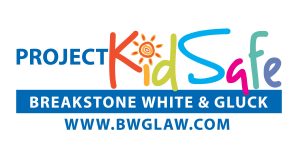 Breakstone, White & Gluck is experienced in representing those injured in Massachusetts in cases involving product liability and defective products. Manufacturers have a responsibility to conduct safety testing and properly label toys with age recommendations. When they neglect this responsibility, toys are not safe to use.
Breakstone, White & Gluck is experienced in representing those injured in Massachusetts in cases involving product liability and defective products. Manufacturers have a responsibility to conduct safety testing and properly label toys with age recommendations. When they neglect this responsibility, toys are not safe to use.
We share this blog as part of our holiday toy safety series and our Project KidSafe campaign. Learn more about Breakstone, White & Gluck and our work for clients on our website.
Kids II Infant Sleepers, Linked to Deaths of 5 Infants
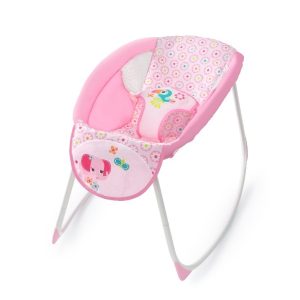
Kids II has recalled nearly 700,000 rocking sleepers, just two weeks after the stunning Fisher-Price recall.
There is a new and frightening warning out about infant sleepers. This time, families are being urged to stop using Kids II infant rocking sleepers because they have been linked to the deaths of five infants. Kids II recalled its entire line of infant rocking sleepers on Friday – approximately 36 models and 694,000 individual products – just two weeks after the stunning Fisher-Price recall.
Fisher-Price recalled 4.7 million of its Rock ‘n Play sleepers on April 12, after an investigation linked the product to more than 30 deaths over 10 years. This means that combined, the two companies sold more than 5.3 million defective sleepers to unknowing families.
Kids II introduced its sleepers in March 2012. Five infants have since died while using the sleepers after rolling from their back to their stomach while unrestrained or under other circumstances.
These sleepers were sold at Target, Walmart and Toys “R” Us as well as online, with a price tag of $40-$80. Parents and grandparents who own one should stop using the Kids II sleepers and contact the company for a recall or a voucher to use toward another product. Parents can call Kids II toll-free at 1-866-869-7954 8:00 a.m.to 5:00 p.m. ET Monday through Friday or visit the company’s website.
Read the Consumer Product Safety Commission’s recall notice for a full list of the recalled sleepers. One of the models was sold with Disney branding.
In the Fisher-Price case, the Consumer Product Safety Commission and the company, which is part of Mattel, initially announced the sleeper had been linked to at least 10 deaths in early April. The company said the deaths all involved children who were 3 months or older. The company’s remedy was for parents to stop using the rocker when children turned 3 months old or became capable of turning themselves over.
Soon after began the calls for a recall. Consumer Reports and the American Academy of Pediatrics (AAP) were the leading advocates in both the Fisher-Price and Kids II sleeper recalls. Both products put children in canopy-like sleeper, which can rock to music and is highly likely to move if an infant can. The AAP warns the rocking sleepers are unsafe and create a risk for suffocation and strangulation. The academy advises that infants should only sleep on flat surfaces such as cribs or bassinets. The sleeping surface should be free of soft bedding, toys and other products.
After Friday’s recall, Consumer Reports asked the Consumer Product Safety Commission if the agency intends to recall all sleepers on the market. An agency spokesperson said it continues to actively investigate sleep products and was “reassessing the product class and hazards associated with it.” Meanwhile, Mattel has announced the Fisher-Price recall will cost the company $27.3 for the quarter ending March 31, 2019. But the recall won’t entirely remove the sleeper from homes. According to Consumer Reports, Fisher-Price sells the same product in Canada, but markets it as a “soothing seat.”
About Breakstone, White & Gluck – Boston Product Liability Attorneys
Breakstone, White & Gluck is a Boston personal injury law firm which represents individuals who have been injured by unsafe products. When a product has caused injury, there should be an investigation to determine the cause, which often falls under three categories: defective design, manufacturing error or a failure to warn consumers about the potential for injury. If someone in your family has been injured by a defective product, learn your rights. Contact our Boston product liability lawyers at 800-379-1244 or 617-723-7676 or use our contact form.
Ford Recall: Drivers Say Steering Wheels Have Come Off While Driving On Highway

Attorney David W. White specializes in personal injury and product liability cases at Breakstone, White & Gluck of Boston.
Ford drivers are gripping the steering wheel anxiously after the automaker’s stunning safety recall this week. 1.4 million Ford vehicles have been recalled because the bolts on the steering wheels can become loose. Ford will repair the vehicles, but not until the end of April at least.
“This recall is very upsetting,” said Attorney David W. White of Breakstone, White & Gluck. “Nothing is more basic to a car than a steering wheel. Automakers have a responsibility to fully test vehicles and all equipment before bringing them to market. They continue to fail drivers.”
This recall affects 2014-2018 models of the Ford Fusion and the Lincoln MKZ. According to Consumer Reports, Ford’s customer-service phone number is 866-436-7332 and Lincoln’s customer service phone number is 800-521-4140.
Ford has said it will replace the steering wheel bolt and install a larger nylon patch to maintain pressure. A company spokeswoman said consumers will be notified by mail the week of April 30th.
In announcing the recall, Ford said it was aware of two car accidents related to the defective steering wheels, one involving injury. This is not the full story though. After reviewing federal records, USA Today reported the National Highway Traffic Safety Administration has received more than 45 reports of the steering wheels becoming loose or falling off, some resulting in car crashes.
One driver said the steering wheel on his 2014 Ford Fusion became unstable and he drifted into a manhole, destroying his vehicle. Others said they had the frightening experience of having steering wheels come loose as they drove down the highway. One driver said all he did was bump the steering wheel with his knee and it came off.
Once a manufacturer determines there is a safety defect, it has 5 days to notify the NHTSA. Automakers are then responsible for recalling defective motor vehicles or equipment.
Americans may associate Toyota, General Motors and Takata with most auto recalls. Yet Ford has made its own headlines for safety defects. Last year, it recalled 1.3 million F-150 Super Duty pick-up trucks with faulty door latches last year. Consumers reported the doors were swinging open while the vehicles were in operation. It also issued smaller recalls fixing more door latches and to stop cars from overheating. The company had received 29 reports of engines overheating and catching fire in some vehicles with 1.6-liter GTDI engines.
At Breakstone, White & Gluck, our Boston personal injury lawyers have investigated serious car and truck crashes caused in part by defective parts. We have over 100 years combined experience representing individuals injured by car crashes, truck accidents and other traffic collisions in Boston and throughout Massachusetts. Many of our car accident and other personal injury cases involve product liability claims and investigation into dangerous and defective products.
| Highlighted Cases | |
|---|---|
| $3 Million Settlement in Tractor-Trailer Crash Breakstone, White & Gluck negotiated a $3 million settlement for our client, who was hit by a tractor-trailer truck owned and operated by a beverage distributor. Read more about the case and the investigation of the truck. |
|
| $1.15 Million Settlement in Defective Fitness Equipment Injury Breakstone, White & Gluck negotiated a $1.15 million settlement for our client who was seriously injured while using defective fitness equipment at a local gym. The trainer who was supervising our client was also negligent in a number of ways. Read more. |
|
Contact Breakstone, White & Gluck
If you have been injured, learn your rights. For a free legal consultation, contact our Boston personal injury lawyers at 800-379-1244 or 617-723-7676 or use our contact form.
The Holiday Toy “Don’t Buy” List
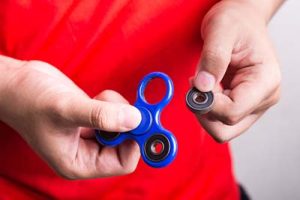
Fidget spinners have been one of the most popular gifts of 2017, but the small pieces can fall out and cause a child to choke.
By now, the children in your life have probably sent you their holiday toy wish lists. But just as important is the holiday “don’t buy” list.
W.A.T.C.H. released nominees for its “10 Worst Toys of 2017” list in mid-November, leading with Hallmark’s “Ittys Bitty” Baby Stacking Toy. This toy was recalled by the Consumer Product Safety Commission (CPSC) in August. The fabric hats and bows on the Disney characters can detach and cause a young child to choke. This toy also has no safety warnings or age recommendations.
Toy 2: Tolo’s Tug Along Pony. This toy is marketed for children 12 months and older. It has a 19-inch cord, which is permitted for pull-along toys. But W.A.T.C.H. says this toy poses a strangulation hazard and does not carry any safety warnings.
Toy 3: The Wonder Woman Battle-Action Sword. This toy is recommended for children age 6 and up. Before you buy, note that the sword is large and sharp enough to cause facial or impact injuries. The packaging also gets a failing grade. It encourages children to “fight alongside men in a war to end all wars.”
After Child’s Death, Another Safety Warning: Keep Hoverboards Out of Your Home and Away From Your Loved Ones
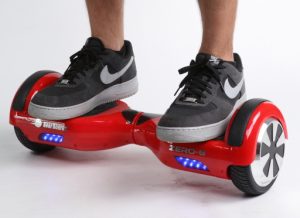 We saw the worst that can happen last week in Harrisburg, PA when a hoverboard caught on fire in a family’s home, claiming the life of a three-year-old child.
We saw the worst that can happen last week in Harrisburg, PA when a hoverboard caught on fire in a family’s home, claiming the life of a three-year-old child.
The hoverboard reportedly ignited while charging, destroying the home. The three-year-old girl died at a local hospital and two other girls were left in critical condition. The girl’s father and a teenage boy were treated for smoke inhalation.
This tragedy was compounded by another death; a local firefighter was reportedly killed in a motor vehicle accident while driving to the fire, the victim of an alleged drunk driver who now faces charges.
This is the first hoverboard fire to claim a life, though we have heard plenty about the product’s dangers. The hoverboard is a self-balancing electric scooter with no handlebars. You may anticipate injuries such as falls and broken bones. But the greater risk lies with the explosive lithium-ion battery packs, which have caused massive fire damage and now a child’s death.
Airlines, Retailers and the Federal Government
Airlines, retailers and the federal government have all taken action against hoverboards.
In December 2015, several major airlines banned hoverboards, dashing the hopes of last-minute holiday shoppers who wanted the cool new toy celebrities were riding all over social media. The airlines said the lithium-ion batteries could cause a fire onboard, and manufacturers were not providing consistent information on the size and power of batteries.
Over the next few months, hoverboards ignited and burned two homes to the ground, including one in Nashville. As her father watched, a teenager was forced to jump from an upstairs window.
Shortly thereafter, Amazon and Best Buy stopped hoverboard sales (at least temporarily). By July 2016, half a million hoverboards were recalled. Amazon was then named as a defendant in a $30 million lawsuit for selling the hoverboard responsible for the Nashville blaze. As the seller of the allegedly defective hoverboard, a retailer may be found liable for selling a defective product under most state product liability laws.
Hoverboard Recall
The July 2016 recall covered hoverboards from 10 manufacturers, all made in China. Consumers were urged to stop using the products immediately and return them. Check online to see if you have a recalled hoverboard.
According to a Consumer Product Safety Commission (CPSC) spokesman, the agency has investigated more than 60 hoverboard fires since Fall 2015. Massachusetts has seen several hoverboard home fires, including in Chelmsford and Somerville, according to The Boston Globe.
For all the dangers, hoverboards are still being sold. In 2016, the CPSC worked with UL, a global product safety testing organization, to develop new standards for hoverboards. Time will tell if the new generation is any safer. For now, hoverboards are a product to keep out of your home and far away from your family. Please share our blog with anyone who has a hoverboard or wants to buy one.
Results for Clients in Product Liability Claims
Free Legal Consultation 800-379-1244
 Read about Attorney David W. White’s $1.15 million product liability award for his client who was seriously injured by defective fitness equipment.
Read about Attorney David W. White’s $1.15 million product liability award for his client who was seriously injured by defective fitness equipment.
With over 100 years combined experience in product liability cases, the attorneys of Breakstone, White & Gluck have obtained numerous awards for clients injured by defective products. Our attorneys are known throughout New England for our results in these cases and have been consistently recognized as Top 100 New England Super Lawyers and Top 100 Massachusetts Super Lawyers.
Hoverboards and Drones Bring Safety Risks
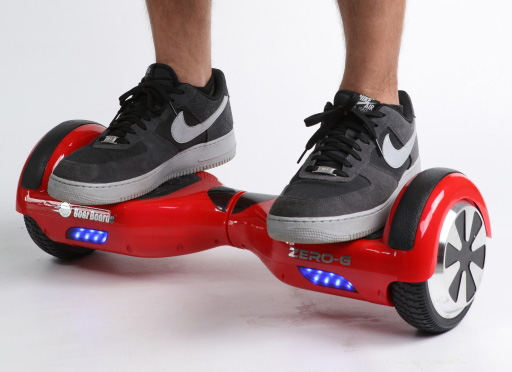 Despite fires and hard falls, the hoverboard was one of the year’s most popular gifts.
Despite fires and hard falls, the hoverboard was one of the year’s most popular gifts.
Reports of hoverboard fires began before the holidays. Amazon even told consumers to return some models in mid-December and notified sellers that they must provide documentation showing hoverboards are compliant with safety standards. The Consumer Product Safety Commission (CPSC) opened an investigation on Dec. 16th, after reports of 10 hoverboard-related fires in Washington, California, New York and other states. The fires often happen during charging.
The CPSC has also received dozens of reports of hoverboard-related falls from hospital ERs, including concussions, fractures and internal organ injuries. Christmas Day brought more injuries, revealed as photos and videos were posted to social media.
Congressman Carlos Curbelo of Florida fell when he tried out his daughter’s hoverboard. He tweeted a photo of himself wearing a sling:
“Confirmed – #hoverboard is for kids. My daughter got it. I ended up in @BaptistHealthSF #ER. #hoverboardChristmas.”
Confirmed – #hoverboard is for kids. My daughter got it. I ended up in @BaptistHealthSF #ER. #hoverboardChristmas. pic.twitter.com/ADRrYBB81J
— Carlos Curbelo (@CLCurbelo) December 26, 2015
We do not think this product is safe for any age. But we agree with his colleague, Congresswoman Illeana Ros-Lehtinen of Florida, who tweeted back: “Ouch. At least it didn’t catch on fire!”
News Headlines
One headline from the Washington Post: “Thanks for ruining Christmas, hoverboards.” Below is a video from the report.
Our Thoughts
This is a dangerous product and safety concerns need to be addressed. If you received one, consider returning it. If you keep it, follow instructions for charging it. Do not charge it overnight or while you are outside the home. Also, remember most airlines have banned hoverboards due to the fire risk.
If you do ride, always wear a proper helmet and padding while using this product. Ask what the local traffic laws are before use.
Drones
Many people also received drones as holiday gifts. The Federal Aviation Administration (FAA) predicted more than 1 million drones would be gifts on Christmas Day.
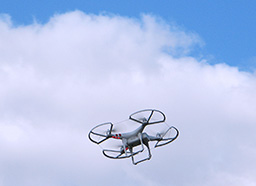 On Christmas Day, photos and videos of drones crashing on the ground, into the neighbor’s roof and even into other family members filled social media. Read this Washington Post report, “Wear a Helmet: All those Christmas Drones are Falling Out of the Sky.”
On Christmas Day, photos and videos of drones crashing on the ground, into the neighbor’s roof and even into other family members filled social media. Read this Washington Post report, “Wear a Helmet: All those Christmas Drones are Falling Out of the Sky.”
The FAA has set up a website to register drones. Anyone with an aircraft weighing from a half-pound to 55 pounds must register with the FAA. Drone owners who are 13 and older must register on the FAA website. Parents with younger children are expected to register on their behalf.
Drone Owners Must Take Care
There are serious concerns about drones interfering with airplane traffic, but there are also very real concerns about general transportation safety. Drone owners must take care to be sure that they do not interfere with traffic, bicyclists or pedestrians. Be considerate and be aware of local laws and ordinances related to drone use.
Read More


